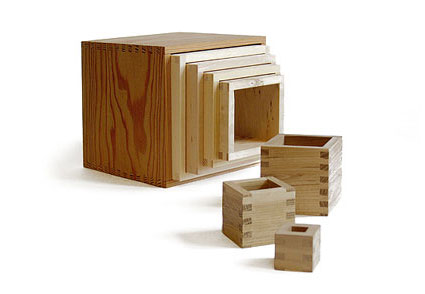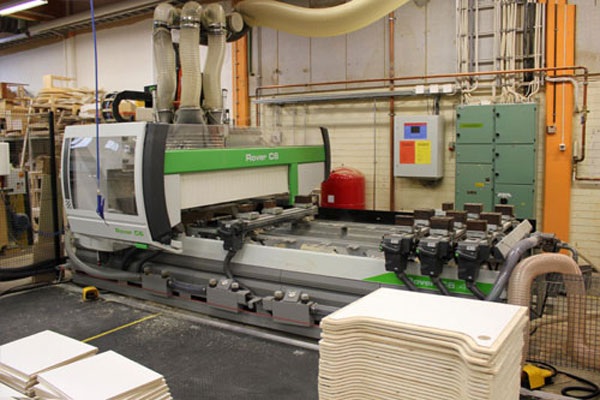Several requirements are imposed on the manufacture of joints. It is worth considering issues such as appearance, strength and production, as well as economic factors. Below are some more details on these.
Appearance of the joint
If the joint is designed to be visible, it can be a significant element in the appearance of the product. Joints such as notched joints and dovetail joints can be very decorative.
If the joint is designed to be unseen, the ornamental appearance of the joint does not matter. The appearance of the product can then be influenced by the location and direction of the seam of the joints. The natural pattern of the wood also affects the appearance of the product. If the seam between the jointed pieces is designed to be as inconspicuous as possible, it places very high demands on the machining. Sometimes, for manufacturing reasons, the seam is designed to be visible by slightly bevelling the edges of the jointed pieces. This makes it more difficult to detect small machining errors and the impact of any natural shrinking and expansion of the wood.
The dimensions of a joint have a considerable influence on its appearance. If the joint is designed to be very firm, it may look clumsy. On the other hand, if other structures are designed to be as thin as in mouldings, it may be difficult or impossible to make the joint strong enough.
The designer may wish to make the joint solid and inconspicuous, but current logistics requirements may require an openable joint, requiring mountings and non-adhesive alignment pins to support the joint.

Strength
The dimensions of the joint have a considerable influence on the appearance of the joint. If the joint is designed to be very firm, it may look clumsy. On the other hand, if other structures are designed to be as thin like in mouldings, it may be difficult or impossible to make the joint strong enough. The designer may wish to make the joint solid and inconspicuous, but current logistics requirements may require an openable joint, requiring mountings and non-adhesive alignment pins to support the joint.
Production & economic factors
A skilled carpenter solves the joint structures in a way that is rational in terms of the production objectives. Individual workpieces are still faster to make when they are hand-crafted, but even in a smaller series, one should use machining for a finer finish.
Efficiency criteria, especially in industrial production, require the use of easily machinable materials, which are also low in waste. It should be possible to carry out machining with the existing machines, blades and personnel.

Efforts are being made to standardise the dimensions and production methods of industrial joints. For example, it is desirable to minimise the dimension range of dowels for manufacturing reasons. This will cause some joints to become over-dimensioned, but work will be made easier with less changes of machine tools and a smaller need for storage. The production is designed so that the machining of the joint can be combined with other work stages. Modern robotics, on the other hand, allow the production of very complex structural joints under computer control. The programs optimise the production both in terms of time and material loss.
The profitability and operating margin of manufacturing and production must also be kept in mind when designing joints. The costs of the joint come from the materials used, salaries and other resources, such as tools, blade costs, sanding belts, energy, machine maintenance and transportation.
The cost of manufacturing the joints must be matched to the target price of the product. On the other hand, impressive and durable joints can also be used as sales arguments and quality indicators.